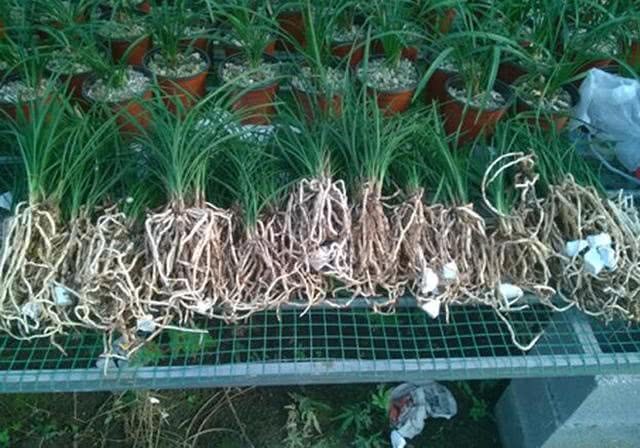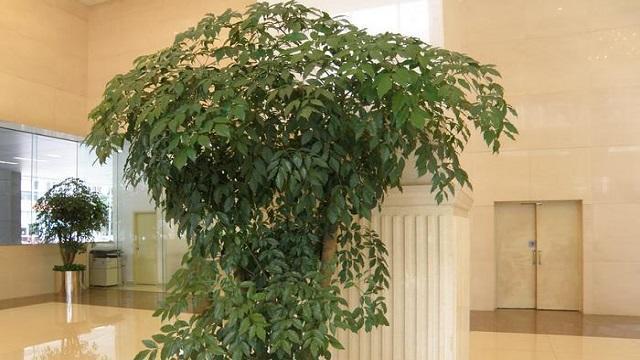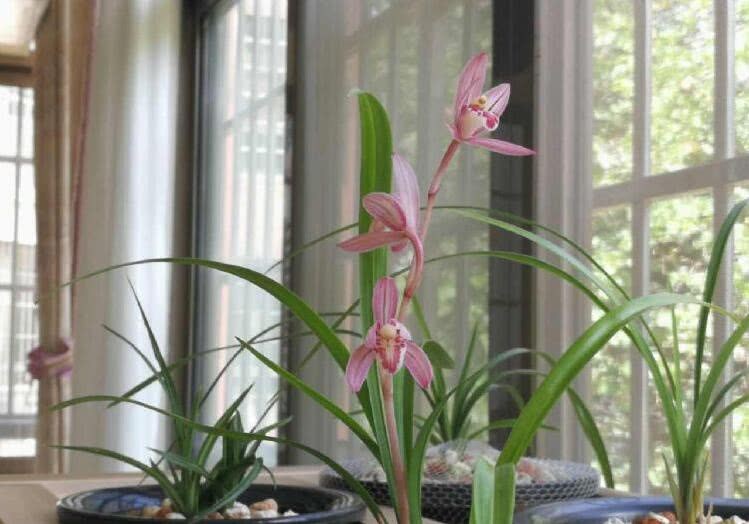Depth Analysis of Orchid Plant material No longer worry about Orchid planting material selection

First: the selection principle of orchid plant material
The choice of orchid plant material is to cultivate orchids, and it is a key step to raise orchids well, because the root structure of orchids is different from that of other flowers and trees, and it is fleshy, stout, hypertrophic, and needs to be symbiotic with bacteria to obtain nutrients. You need to breathe, you can't get water!
Let's first popularize science about the root of orchids:
The structure of orchid root can be divided into outer layer, middle layer and inner layer.
The outer layer is the root bark tissue that surrounds the orchid root, which mainly protects the cortical tissue and absorbs and maintains water within the cortex. In the root bark tissue and around the rhizosphere, there are usually rhizobacteria, called orchids, which belong to a kind of true bacteria. The mycelium of these orchids invaded into the cortical tissue of the orchid root, forming a symbiotic relationship.
The middle layer is cortical tissue, and the cells are relatively developed, which play the role of storing water and nutrition. it is a symbiote with large water content, and its main function is to convert and digest the fertilizer absorbed by the surface layer, and the nutrition and water in the cortex of the orchid root. It creates the necessary living conditions for the orchid, so that the orchid can reproduce and develop. At the same time, the orchid root constantly decomposes and absorbs the mycelium of the orchid as a nutrient for the growth of the orchid.
The inner layer is the central stem of the orchid root, yellow and white, about 0.1 cm thick, not easy to break, and the main function is to strengthen the root strength, transport and transport the water and nutrients needed for the growth of the orchid. The fleshy orchid root has a strong water storage capacity, so the orchid should not be watered too frequently, otherwise the root is easy to rot.
Orchid is a kind of air root plant. A small part of the water needed for its growth is supplied with moisture in the air, and most of the water must be absorbed by the water contained in the cultivated substrate. The orchid root also needs to absorb oxygen from the space of the substrate in the orchid basin to breathe. If the drainage of the substrate in the orchid basin is poor and the water content is too high, the water will fill the matrix pores, resulting in stagnant water, the matrix pores are full of water and lack of air, the roots are suffocated by hypoxia, and the root function is gradually lost for a long time. At this time, due to the invasion and reproduction of pathogenic bacteria, the root system will rot.
Clear the characteristics of orchid root, we choose the principle of plant material is stable grain character, filter water breathable, moist but not waterlogged, dry but not dry, not only breathable, but also moisturizing, but also have certain fertility of orchid plant materials, but we should pay attention to, the materials used must be non-toxic, non-harmful bacteria, non-pollution, non-parasitic eggs, otherwise it will also bring harm to the root system of orchids.
Second: the types of orchid plants
There are mainly two kinds of orchid plants.
From the degree of softness and hardness, it can be divided into hard plant and soft plant, which is also called hard medium.
Or those that can be degraded or degraded rapidly are soft plants, and those that can not be degraded for a long time are hard plants.
From the nutrient elements, it can be divided into organic plant material and inorganic plant material.
These two kinds of mixture evolved into the third mixed plant material, that is, the combination of soft plant material and hard plant material. Let's talk about their characteristics.
1. Soft plant material
Let's start with the defects of soft planting materials:
Soft plant materials have relatively high requirements for environmental ventilation, especially in the environment with high humidity, if the ventilation is insufficient, the new buds are not easy to germinate, even if the new buds are exposed, the roots are not easy to grow rapidly, and if fertilization is very easy to carbonize the root tip; at the same time, if the lower part of the basin remains wet for a long time, the crystal head disappears, and the root will blacken and rot, especially in summer, this process will accelerate the rapid decay of plant materials, and further lead to stuffy and wet in the basin.
Let's talk about the benefits of soft planting materials:
A, the relative bud point is easy to activate and grow, which leads to high flowering and seedling rate, especially suitable for covering the old man.
B, do not need frequent watering, if the basin is well ventilated, the root will be very good, it is easy to burst the basin
C, nutrients are relatively balanced, no fertilization is needed, and fertilizer damage can be effectively avoided.
D, the overall weight is lighter, the load-bearing pressure on the orchid shelf is small, and it is also convenient to move and carry!
Commonly used soft plant materials are: pine chestnut king, snake wood, peat, coconut shell, moss, bark, leaves and so on.
Second, hard plant materials
Let's start with the defects of hard plants:
Hard plant material is not easy to retain moisture, the basin is easy to dry, angry, need frequent watering, not suitable for lazy people, otherwise new buds are not easy to germinate, but also easy to cause empty roots, most hard plants are not fertile, prone to malnutrition, plants are short, leaves yellowing, fertilizer is needed in the process of breeding to solve the problem of lack of fertility, a little attention is easy to cause fertilizer damage The flowering rate and seedling rate were lower than those of soft plants.
Let's talk about the advantages of hard implants:
Hard plant material is not sticky and greasy, not hardened, sterile and sanitary, hydrophobic, breathable, easy to obtain, relatively random watering, little change in PH value for long-term use, slow decomposition, not easy to decay, and can be used repeatedly. Orchids are not prone to diseases and are not easy to die. Suitable for novice use!
Common hard plant materials are: gold stone, volcanic stone, perlite, broken bricks, broken tiles, wind fossils, ceramsite and so on.
Third, mixed plant materials
The mixed plant material is to mix several kinds of plant materials in the hard plant material and the soft plant material to prepare a new plant material. Its biggest advantage is that we can add or subtract all kinds of plant materials according to our own environment, basin equipment and management methods in the preparation process, and learn from each other to meet the needs of orchid growth and our own management. Generally speaking, in an open environment or a well-ventilated semi-closed environment, mud pots or sweating pots with good air permeability are usually used, so more soft plants and less hard plants can be used. If it is in a closed or semi-closed environment with high air humidity, you can use more hard plants and less soft plants. Before preparation, drugs or high temperature must be used to sterilize and kill insects. This kind of plant materials contain certain nutrients. Usually, there can be less or no application of base fertilizer, should be mainly the application of topdressing, so that "thin fertilizer frequently applied".
Conclusion: both soft and hard plants can grow orchids well. there is nothing to compare between soft plants and hard plants. You can use whatever kind of plant you think is convenient. Some Lanyou said that orchid hard plants planted with soft plants can not be planted well. In fact, this view is wrong, but it just needs to be re-adapted in the past few months. Lanyou also said that soft plants are easy to infect bacteria after using hard plants. This view is also wrong. Do orchids with soft plants are planted in a sterile environment?. The key is that most orchids grown in the greenhouse use soft plants, which is the key. Greenhouse grass is not easy to raise because of plants, so when introducing orchids, we have to make sure whether the orchids are diseased seedlings or not. Natural orchids, no matter where the environment changes, give some time to adapt, as long as you give orchids can adapt to the environment is no problem.
Finally, give some advice to friends who like to grow orchids with soil:
1. Use granule, sift out powder as far as possible, and the soil can not be too sticky. If the viscosity is too heavy, a small amount of coarse sand, wood shavings, bark and other things can be mixed into the soil to improve soil properties and soil quality.
2, the basin should choose the mud tile basin or sweating mud basin with good air permeability and open type, and the filter layer must be placed at the bottom of the basin to prevent the soil from blocking the drain hole and causing stagnant water.
3. In daily management, we should give priority to "dry maintenance", that is, when watering, we should master the principle of "no dry, no watering, mainly moistening; we would rather be dry than too wet". However, we should also pay attention to prevent the phenomenon of drying up from the bottom of the basin, that is, watering must be thoroughly watered.
4. Because the soil material we choose contains a lot of humus, we do not need to add base fertilizer, we can choose to apply fertilizer by topdressing, and at the same time, we should do a good job of insecticidal and sterilization to prevent diseases and insect pests from invading orchids.
5, the place of the orchid should choose the well-ventilated site, such as the courtyard balcony and other open or semi-closed places, the orchid basin can be set up in the air, so that the orchid basin in the surface ventilated environment, the air humidity can be relatively small. Author: Mei Fei, founder of Orchid Bar Forum, Secretary of Orchid Association of Jingshan City, Hubei Province, online celebrities of orchid industry on major self-media platforms! I will publish orchid knowledge and pictures every day, take you in-depth understanding of orchids, teach you to easily raise orchids, you can always ask me or leave a message below if you don't understand orchids, if you like, you can follow me or collect or forward to help others!
- Prev

Does the happiness tree always lose its leaves? If you deal with the emerald green in this way, you can still call for a long time.
There are many reasons why the leaves of the happiness tree will fall off as soon as they are touched. If they are caused by improper watering, they need to be watered reasonably to ensure that the soil is moist. If it is caused by improper lighting, it is necessary to adjust the light time and intensity to give it sufficient but not strong.
- Next

Jian Lan Sijilan rose witch compound flower
Jian Lan Sijilan rose witch compound flower, flower owner: he Dang Xue Zen view Jianlan four season orchid rose witch complex flower.
Related
- Wuhan Hospital Iron Tree Blooming Result Was Instantly Frightened by the Gardener Master
- Which variety of camellia is the most fragrant and best? Which one do you like best?
- What is the small blue coat, the breeding methods and matters needing attention of the succulent plant
- Dormancy time and maintenance management of succulent plants during dormancy
- Minas succulent how to raise, Minas succulent plant pictures
- What are the varieties of winter succulent plants
- How to raise succulent plants in twelve rolls? let's take a look at some experience of breeding twelve rolls.
- Attention should be paid to water control for succulent plants during dormant period (winter and summer)
- Watering experience of twelve rolls of succulent plants
- Techniques for fertilizing succulent plants. An article will let you know how to fertilize succulent plants.

